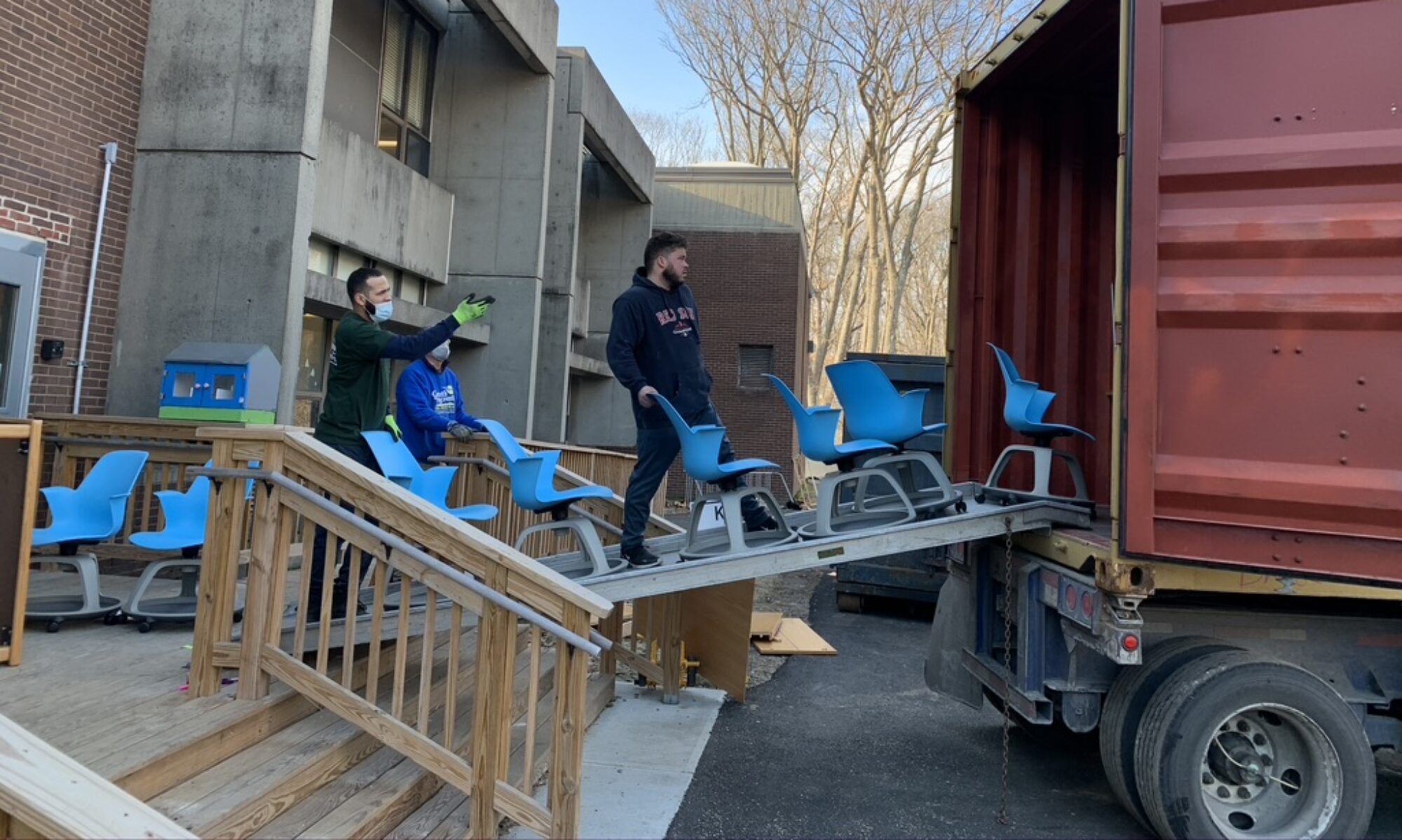Working as we do across the country, we know that almost every organization in education, healthcare, and the corporate world faces increasing demands to demonstrate Sustainability. At the same time every organization is under constant pressure to keep budgets down. When there’s surplus furniture that needs to be disposed of, this conflict often comes to a head. Managers and administrators want sustainable disposition options for surplus furniture, at the same time spending no more money than if the furniture is thrown away.
Liquidation is desirable, but generally not an option in a strong economy, and almost never an option with used school and residential furniture. Giving furniture away locally is another option, but the time and cost are too much to take on, and in the end much of the furniture remains unclaimed.

Disposal
This is still the “easy” option, but it’s expensive, and throwing usable furniture away flies in the face of Sustainability. Disposal also creates a terrible impression among community members when they see good furniture tossed into dumpsters.

Recycling
Some furnishings like metal desks, file cabinets and storage cabinets can be recycled for their metal content. But it’s only a partial solution.

Reuse
Reuse offers large environmental benefits and the greatest benefit to the community. If it can be done at a cost that’s less than or equal to the cost of disposal, it’s by far the best option for surplus furniture.
Reuse: What’s the Cost Comparison

In projects across the country, clients tell us that reuse has the lowest overall cost. Labor is the same whether furniture is disposed, recycled, or reused. Administration costs a little more with reuse, because you’re treating used furniture as an asset, not a liability. The real savings come in disposing of the surplus, where trailers shipped for reuse cost much less than dumpsters sent to the landfill. Often the most cost-effective solution is to combine recycling of metal items for their scrap value with reuse of the balance that cannot be recycled.
A More Efficient Process

Loading a trailer for reuse takes about two hours, and is much more efficient than managing labor, containers, and transportation for multiple trips to a landfill or recycling center. One trailer packed for reuse holds as much as 3-4 large “rolloff” containers, so there’s less traffic, fewer delays, and a safer project site.
Does Reuse Make a Difference?

Children in Malawi, one of the world’s poorest countries, at desks sourced in Pittsfield, MA
Reuse saves money. Reuse is good for the environment. Reuse makes life better for some of the world’s most disadvantaged communities. The smallest environmental impact, the highest benefit to society, and the least cost. Yes, reuse makes a difference.
The bottom line: By thinking and implementing reuse, every organization can achieve critical benefits for their community, the planet, and their budget.
Click here to download a PDF of this post.
If you’d like more information about reuse or have surplus furnishings that deserve to be reused instead of thrown away, please use the Reply box to let us know, and we’ll get right back to you.
